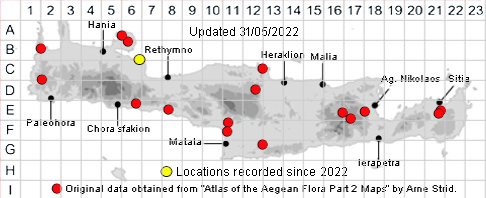
SPECIES DESCRIPTION
LUPINUS GUSSONEANUS
Family and Genus:- See- LEGUMINOSAE
Common Names:- Hairy lupin
Homotypic Synonyms:- Lupinus hirsutus var. gussoneanus, Lupinus hirsutus
var. micranthus, Lupinus hirsutus subsp. micranthus, Lupinus hirsutus proles
micranthus, Lupinus micranthus.
Meaning:- Lupinus. The ancient Latin name for the white lupin.
Gussoneanus (L) Probably for Giovanni Gussone (1787-1866). Director
of the Botanic garden at Palermo.
General description:- Brown-hirsute annual.
Stems:-
1) 10-40 cm.
Leaves:-
1) Leaflets, 15-70 x 5-15 mm, obovate-cuneate to obovate-oblong, mucronate,
sparsely hirsute.
2) Stipules, linear-subulate.
Flower:-
1) Racemes, up to 12 cm,
a) lower flowers, alternate.
b) upper irregularly verticillate.
2) Peduncle, up to 1·5 cm.
3) Calyx,
a) upper lip 6 mm, 2-partite.
b) lower 10-12 mm, deeply 3-dentate.
4) Corolla, 10-14 mm, blue,
a) standard, white in the middle.
b) keel, blackish-violet at apex.
Fruit:-
1) Legume, 30-50 x 10-12 mm, hirsute, red-brown.
2) Seeds, 3-4, 5-8 mm, orbicular-quadrangular, compressed, smooth and dull,
pinkish-grey to brown, with dark veins and dots.
Key features:-
1) Leaflets, 5-15 mm wide, obovate.
2) Lower lip of calyx, 10-12 mm.
3) Corolla,10-14 mm.
4) Seeds, 9-12 mm diam.
Habitat:- Scrubland vegetation, olive groves, field margins and open woodland. 0-
1100 m.
Distribution:- Scattered records from W Greece including the Ionian Islands. -
Widespread in the Mediterranean region, extending to W Syria. Fairly rae on Crete
known from only a few scattered locations.
Flowering time:- Late Mar to May.
Photos by:- Kind permission of Saxifraga - Free Nature Images
